

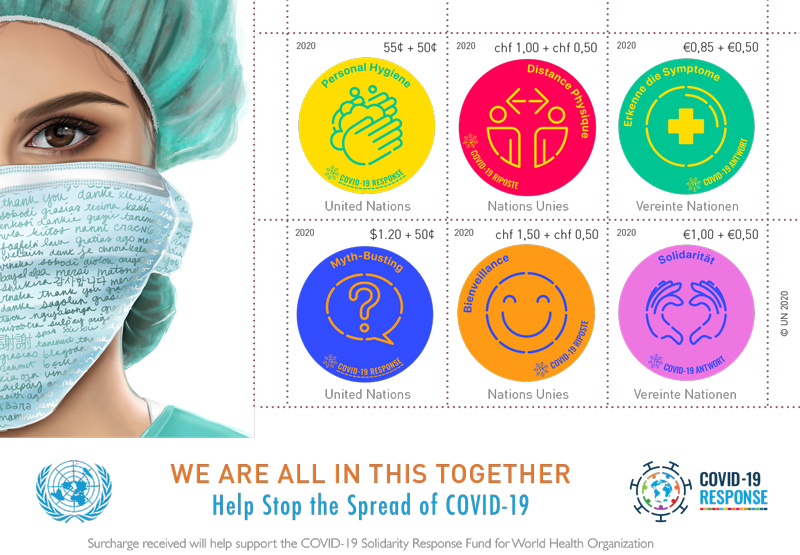
Art in the time of COVID-19
Photos courtesy of Chiara Fiori, Rachel Goerke, Samantha Ford, Michael Tapia-Gonzales and the United Nations Postal Administration June 16, 2020
In award-winning ways, Blue Hens paint, design and photograph their way through a difficult time
When Chiara Fiori set to work on a digital painting of a hospital worker, she never expected it would be seen around the world. Sure, she completed the project in response to a global call for art put forth by the United Nations, but she never thought her piece would be selected from 17,000 submissions — or that the UN would incorporate it into a forthcoming stamp project about the coronavirus pandemic.
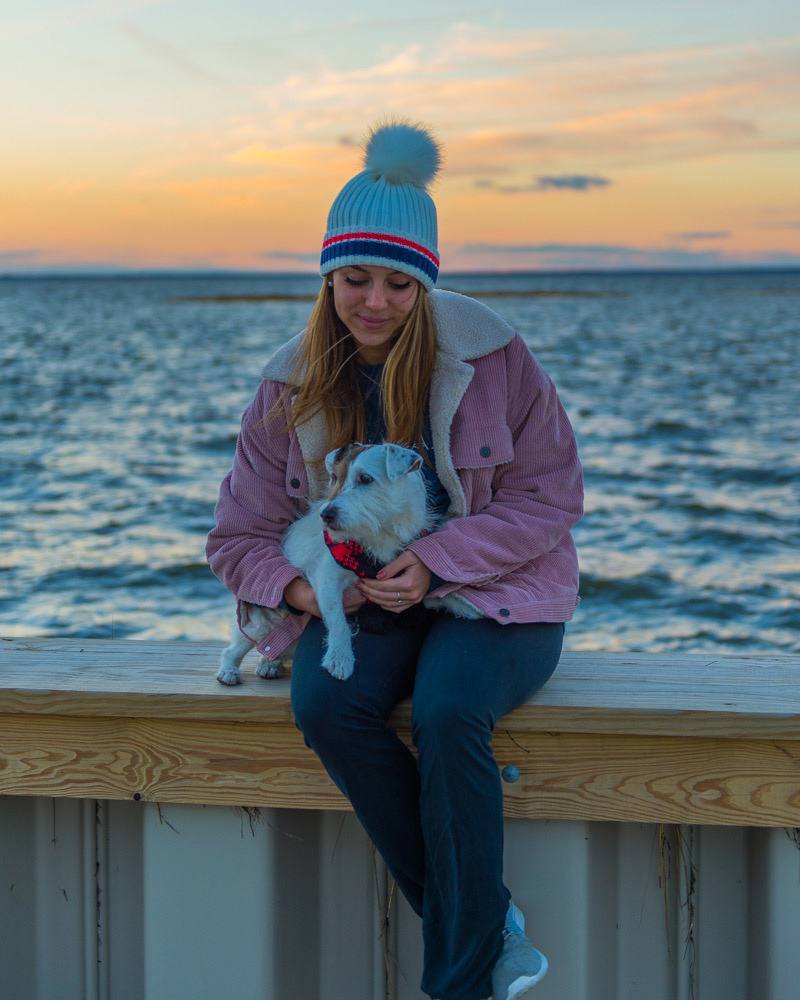
“You keep hearing about the long hours these frontline workers are putting in, so I wanted to express my personal gratitude,” said Fiori, adding that her own father has recovered from COVID-19. “I was very surprised and excited when it was selected.”
Mostly, she explained, she did the work for herself.
“I use art as therapy when I’m feeling anxious or stressed out,” said the rising University of Delaware senior. “Watching the news, you feel compelled to act, and this gives you an outlet.”
When the COVID-19 pandemic turned the country upside down in March, college students everywhere were sent home, their academic and social routines upended. But Blue Hens like Fiori, working toward a degree in the Department of Art and Design, had a coping mechanism up their sleeve (ahem, smock). Seemingly overnight, their supplies — paints, cameras, digital design tools — became instruments not just for completing homework assignments and group projects, but for bearing witness to an extraordinary moment in the world — and finding their own footing in the process.
“Some people might think staying home in isolation limits creativity,” said Jia-Rey Chang, assistant professor of architecture and interaction design. “But I think this situation is helping us develop even more creative ways for our work. You may even see new art forms emerging out of this special moment. In this weird situation, we are going to find our way out through creativity.”
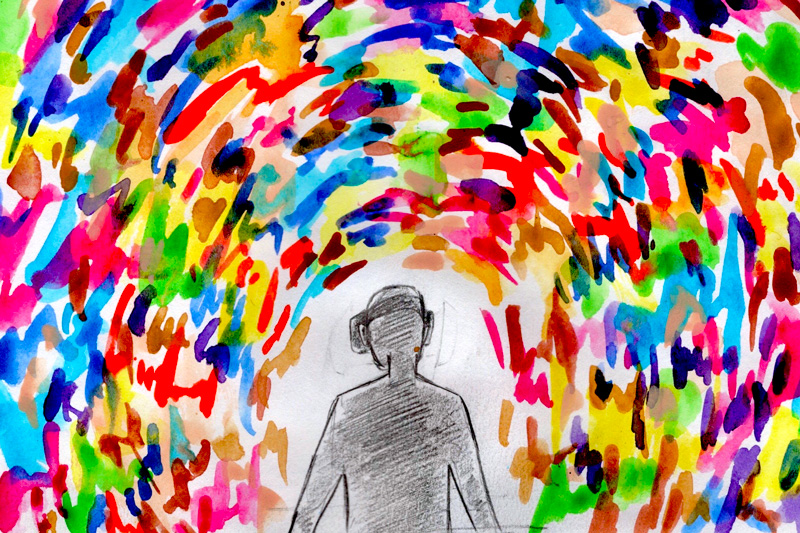
Some of this creativity is manifesting in an increased blending of physical and virtual worlds. Simulation video games that seek to reproduce real life, for instance, are now being used to design everything from graduation ceremonies to virtual art exhibitions. Musicians are performing concerts you can attend from your own living room — with a special app and virtual reality goggles. In a COVID-19 world, where lockdown has become the norm, people are increasingly seeking mobility through this type of art, and Blue Hens are responding.
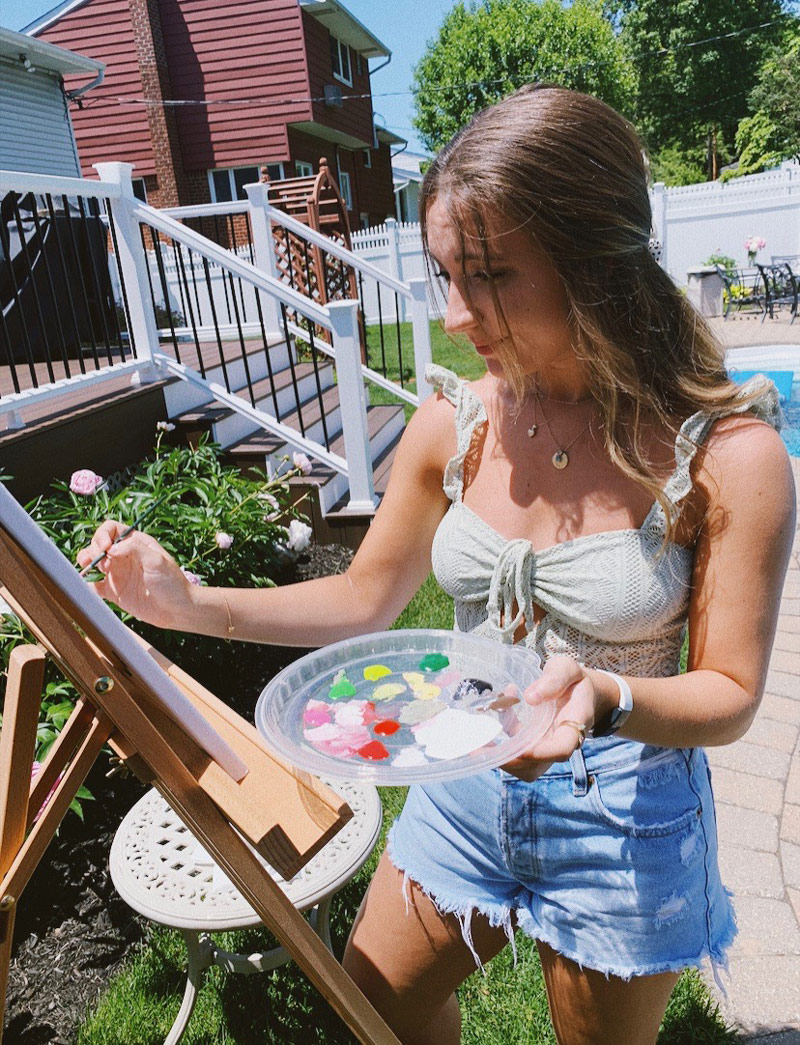
Take Rachel Goerke, a visual communications major and rising senior at UD. When the virus took hold, she had been looking forward to an upcoming study abroad trip with fellow art students, a whirlwind London adventure involving museums, live theater and briefs with professional artists. This would have been Goerke’s first time in Europe, so “it hit me hard when that was postponed,” she said. “I was going to learn so much.”
Rather than crawl under the covers and sulk, Goerke is channeling her disappointment into her work. Over the next few months, as a Summer Fellow at UD, she will design virtual window displays for a women’s clothing brand along with an app prototype that allows for 3-D shopping from home. The idea is to give people an in-store experience — even in quarantine.
“I want the displays to romanticize social distancing,” she said. “I was inspired by carrier pigeons and Romeo and Juliet communicating from a distance. I want it to have that dreamy feel.”
For another class, Goerke designed imagery and merchandise for a fake band by the name of Silent Vegetable. One of her branded items? Not your typical concert tee-shirt, but a COVID-19 inspired face mask.
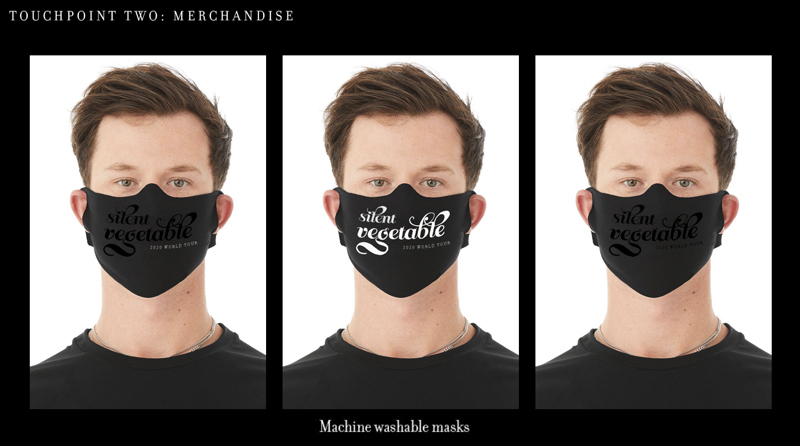
“I’d just go crazy right now if I couldn’t create,” she said. “I feel that, as an artist, you have the power to decide the atmosphere you’re living in. This experience has shown me how fortunate I am to be part of the creative community at UD. Even when the world comes to a standstill — even during difficult times — I know I have the power to keep going, to keep trying to inspire people.”
Another student taking the virtual route is Samantha Ford, a rising senior majoring in fine arts. For her Summer Fellows project, she’ll use skills gleaned from an art and technology class to create an immersive virtual-reality world accessible on one’s smartphone with a VR viewer you can make from cardboard. While the aesthetic details of this world are yet to be determined, Ford is hoping it will provide a “temporary escape and a little bit of happiness” during a challenging time.
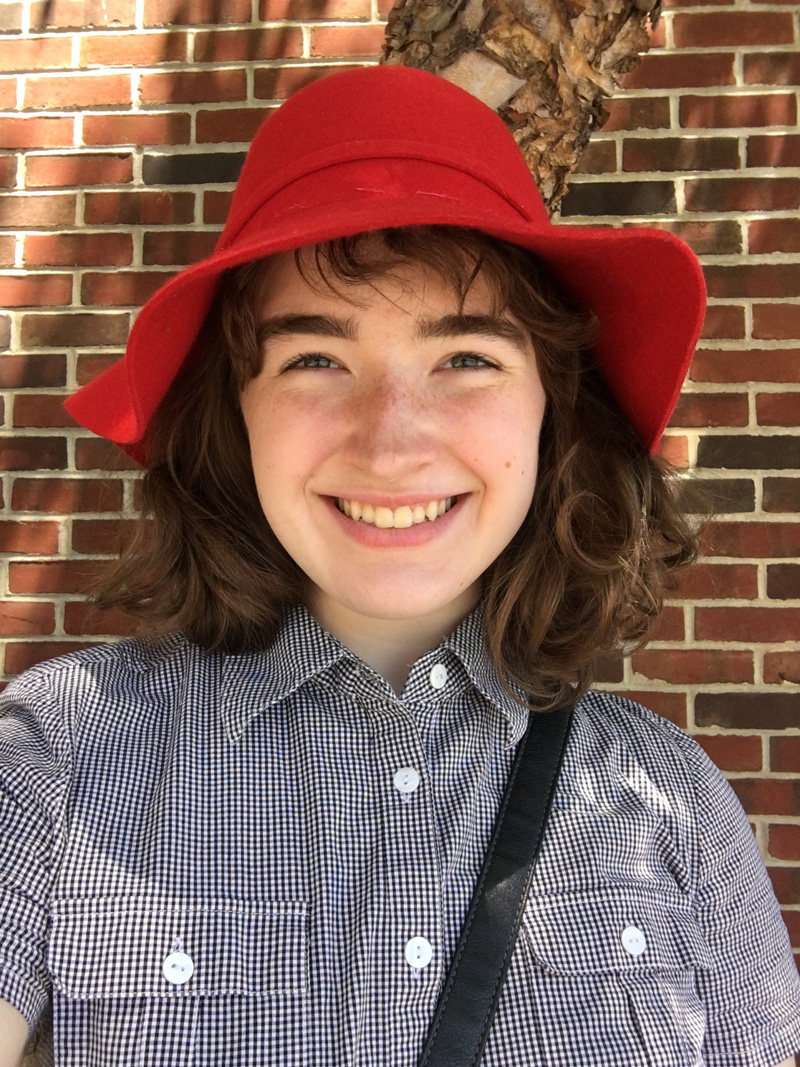
In the meantime, as a visual editor for The Review student newspaper, Ford has been churning out coronavirus-inspired illustrations to accompany articles on a range of topics.
“This is a way to communicate emotions I can’t put into words,” she said. “And I look at it from a historical perspective, too. Artists have always documented what’s happening around them as a way of marking our place in time.”
For Michael Tapia-Gonzales, rising sophomore majoring in fine arts and visual communications, creating during COVID-19 hasn’t come easily. In May, as he was finishing up the spring semester, he and his brother and parents were all diagnosed with the virus. Tapia-Gonzalez’s father was hit the hardest — already unable to work due to the pandemic, now he could barely walk. He had no choice but to seek hospital attention.
The family has since recovered, Tapia Gonzales said, but the stress of those trying weeks made finding a creative groove in quarantine difficult. Things were further complicated by a lack of access to clay and other supplies he’d been working with in a ceramics class at UD. Suddenly, he needed to make sculptures out of found objects — kitchen plates and paper clips among them. It was a challenge, but, in the end, the experience “forced me to think outside of the box,” he said. “Creating took my mind off of everything.”
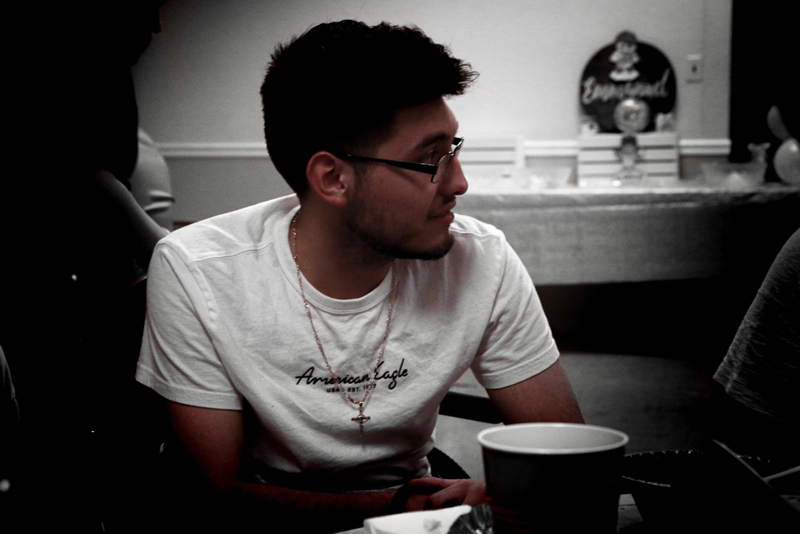
One annual art project that took on special significance this year was a vanitas photography assignment. Students were tasked with shooting a still-life picture that would remind the viewer of the fragility of life (think skulls and snuffed out candles) and the worthlessness of worldly goods. For Tapia-Gonzales, already thrust into greater identification with his priorities, choosing props felt easy. In his piece, jewelry and coins represent things that cease to matter when faced with the failing health of a loved one.
“I was especially impressed with the thoughtfulness with which the students approached this,” said Priscilla Smith, associate professor of photography. “The moment that we’re in and the discussion we were able to have surrounding this assignment made it something more than: ‘Get this photograph done and turn it in.’ It became a real testimony to who they are and where they’re at. With students who are developing visual literacy and a skillful voice, art becomes a way to say things that are very personal, but also universal. It can be much more than decoration.”
There’s also a practical benefit to being an art student during the time of COVID-19. Working remotely and more independently has offered Blue Hens a window into the reality of dealing with clients in a professional setting, and instructors have leveraged the opportunity.
“After students were sent home, our class became more of a dialogue back and forth about the field and what to expect after graduation,” said David Brinley, associate professor of art and an award-winning illustrator. “We were able to get down to the nuts and bolts of the business — contracts, rates, negotiations. All the things that feel more theoretical in the classroom.”
One of the points Brinley stressed is the importance of facing rejection, a professional reality. A contest he urged the students to enter? The UN’s global call for coronavirus-related art, to which Fiori submitted her digital painting.
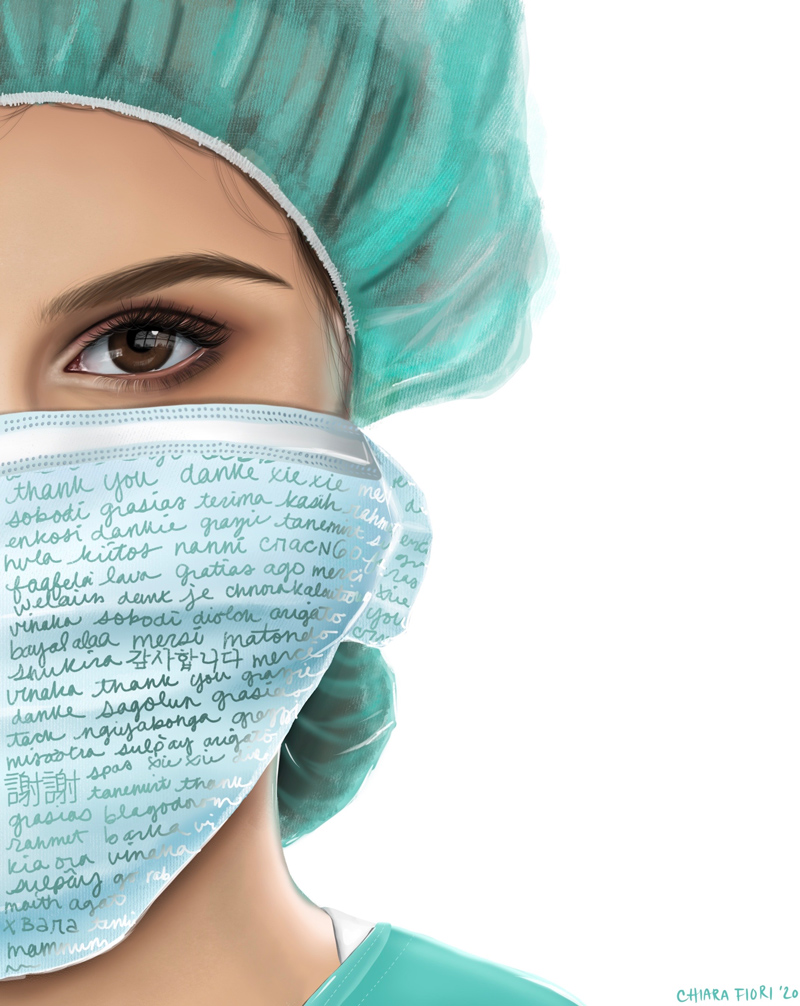
The piece, which depicts a nurse wearing a face mask covered in the words “thank you” in multiple languages, will be featured on a sheet of stamps encouraging healthy practices during the time of COVID-19. Available from the UN Postal Administration (UNPA), the sheet will be sold beginning July 24 at stamp dealers around the world, at unstamps.org, and at the UN headquarters in New York, Geneva and Vienna (when these offices reopen). Each sheet will include dollar, Swiss Franc and Euro currencies. A portion of sales will support the UN’s COVID-19 Solidarity Response Fund.
“This painting is a beautiful, powerful tribute,” said UNPA creative director Rorie Katz, who selected the winning piece, which came with a $500 prize. “I was very pleased to find out the artist is a college student. I had no idea.”
Katz added that she had a strong gut reaction to Fiori’s work — it brought up her own emotions surrounding the virus and the pride she feels for a dear friend serving as a hospice nurse.
Which is, perhaps, a nice reminder: Art isn’t merely helping the students who make it. It’s impacting those lucky enough to encounter it.
For some, despite all the hurt the virus has wrought, that is a reason to celebrate.
“In a lot of ways, this has been a blessing,” said William Deering, assistant professor of advertising and photographic design. “The virus has made us do things we wouldn’t normally do. Because of this, I have students who’ve come alive.”
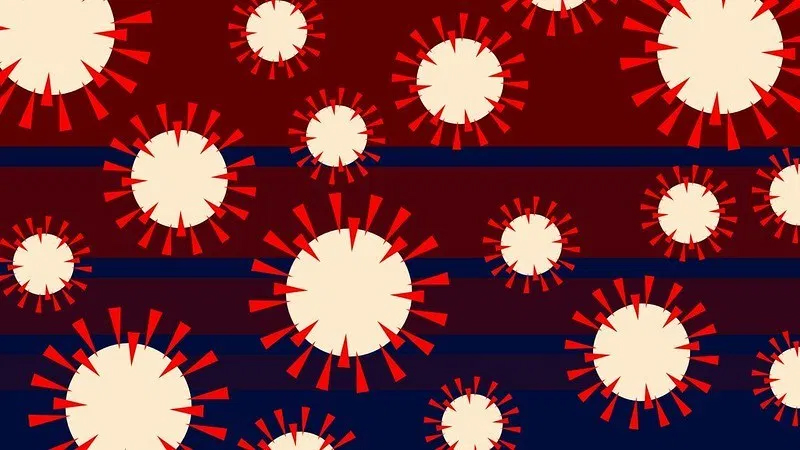
Contact Us
Have a UDaily story idea?
Contact us at ocm@udel.edu
Members of the press
Contact us at 302-831-NEWS or visit the Media Relations website

